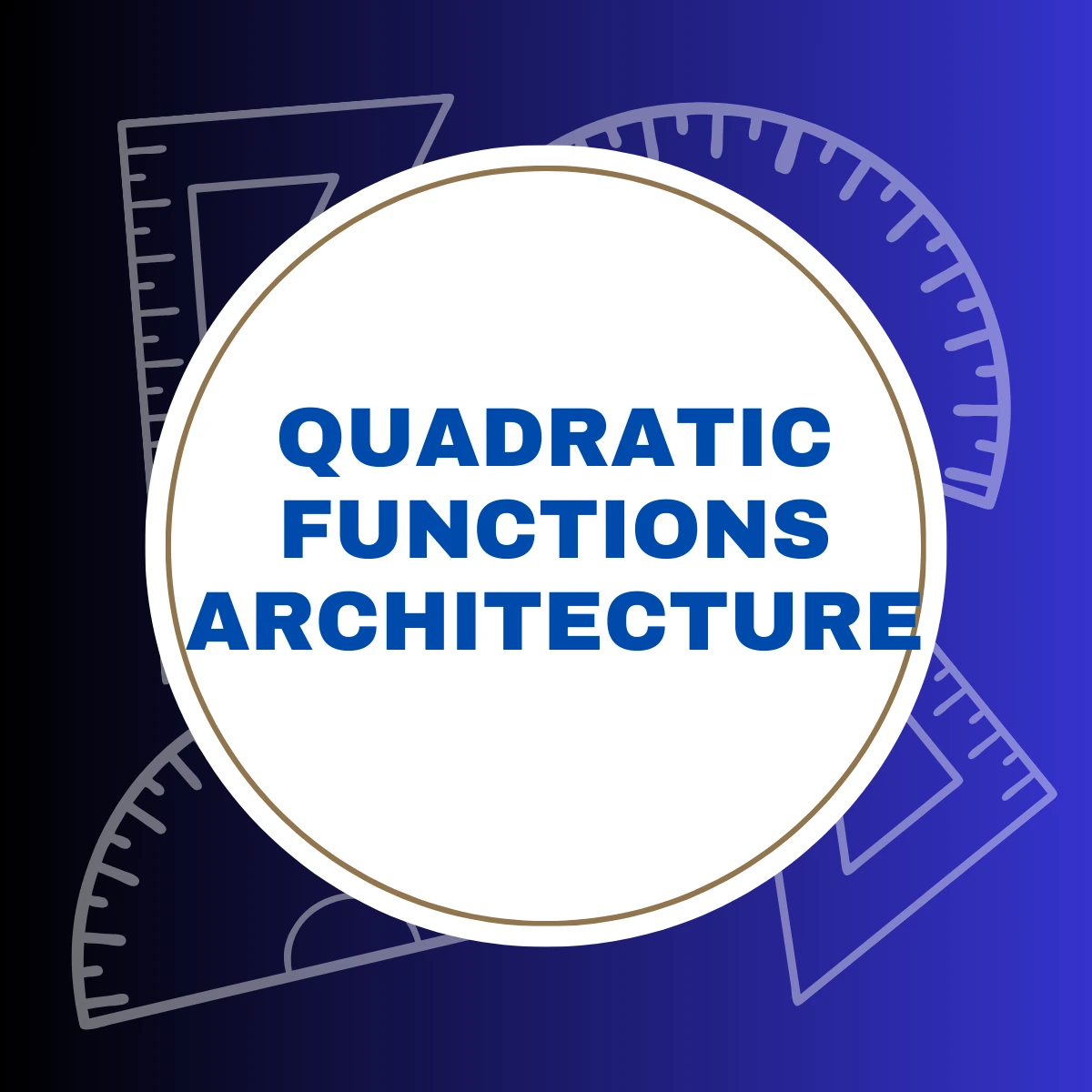Architecture and mathematics have been intertwined since ancient times, with quadratic functions playing a particularly important role in structural design. The elegant curves of parabolas appear in buildings worldwide, combining aesthetic beauty with remarkable structural efficiency. This article explores how quadratic functions shape architectural masterpieces and why these mathematical principles remain essential in modern design.
The Parabolic Arch: Nature's Perfect Support
The parabolic arch, derived from the graph of a quadratic function, is one of architecture's most efficient structural forms. Unlike semicircular arches, parabolic arches distribute weight evenly along their entire curve, making them incredibly strong while using minimal materials. This natural efficiency explains why we see parabolic forms in both historic and contemporary architecture.
The mathematical expression for a parabolic arch can be written as y = ax², where the coefficient 'a' determines how steep or shallow the curve becomes. Architects can adjust this value to create different aesthetic effects while maintaining structural integrity. Our Function Graphing Tool can help visualize how changing this coefficient affects the arch's shape.
Famous Examples of Quadratic Architecture
Throughout history, architects have incorporated parabolic forms into their most ambitious projects. The Gateway Arch in St. Louis, designed by Eero Saarinen, follows a weighted catenary curve that closely resembles a parabola. This 630-foot stainless steel monument stands as a testament to the structural strength of quadratic-inspired design.
Antoni Gaudí, the renowned Spanish architect, used parabolic arches extensively in his masterpiece, the Sagrada Familia in Barcelona. By inverting the parabola to create hanging chain models, Gaudí could visualize the ideal arch forms that would support his complex structures. This technique transformed the mathematical properties of quadratics into physical architectural elements.
Structural Benefits of Parabolic Design
Why do architects continue to use parabolic forms derived from quadratic functions? The answer lies in their exceptional structural properties. A parabolic arch channels compressive forces along its curve rather than creating bending moments, allowing it to support tremendous weight with minimal material.
This efficiency becomes particularly important in bridge design, where parabolic cables support suspension bridges by distributing tension forces optimally. The main cables of suspension bridges follow a shape close to a parabola, demonstrating how quadratic functions solve real engineering challenges. Understanding these principles requires knowledge of vertex form and how it relates to physical structures.
Parabolic vs. Catenary Curves
While parabolas and catenary curves look similar, they derive from different mathematical functions. A parabola follows the quadratic function y = ax² + bx + c, while a catenary follows the hyperbolic cosine function. In architecture, both curves appear frequently, sometimes in the same structure.
The distinction matters because each curve has different structural properties. Parabolic curves distribute uniform loads across a horizontal span, while catenary curves are ideal for supporting their own weight. Many architectural "parabolas" are actually catenaries, though the visual difference is often subtle. For practical purposes, architects sometimes use quadratic approximations of catenary curves.
Modern Parametric Architecture
Contemporary architecture has embraced computational design, where quadratic functions become parameters in complex algorithms. Parametric design software allows architects to manipulate quadratic curves and surfaces to create fluid, organic forms that would have been impossible to design or build in earlier eras.
Zaha Hadid's flowing structures and Santiago Calatrava's dynamic buildings exemplify this approach, using quadratic and higher-order functions to generate curves that respond to both aesthetic and structural requirements. These buildings demonstrate how mathematical principles can produce architecture that appears to defy gravity.
Acoustics and Quadratic Functions
Beyond structural applications, quadratic functions shape the acoustics of performance spaces. Parabolic reflectors focus sound waves to a single point—the focus of the parabola. This property makes parabolic forms ideal for concert halls, theaters, and auditoriums where sound projection is critical.
The ceiling of the Berlin Philharmonic Hall, designed by Hans Scharoun, incorporates parabolic elements to direct sound throughout the audience. Similarly, whispering galleries in domed buildings often work because their cross-sections approximate parabolas, focusing sound waves across large distances. These acoustic properties derive directly from the mathematical properties of quadratic functions.
Designing with Quadratics: Practical Considerations
For architects and engineers working with quadratic forms, several practical considerations come into play. The vertex of a parabola often becomes a critical design point, determining the height and span of an arch or dome. Understanding how to calculate this point using the formula x = -b/(2a) is essential for precise architectural drafting.
Similarly, finding the discriminant of a quadratic equation can help determine whether a proposed curve will intersect with other structural elements. These mathematical tools allow designers to refine their concepts before construction begins, saving time and resources.
DIY Architectural Models with Quadratics
Students and enthusiasts can explore architectural applications of quadratics by creating simple models. By plotting points from a quadratic equation on graph paper and connecting them, you can generate templates for parabolic arches. These can be cut from cardboard or foam board to create structural models.
For a hands-on demonstration of a parabola's strength, try building a simple arch from wooden blocks without adhesive. A properly constructed parabolic arch will stand without support, while other curves may collapse. This practical experiment demonstrates why quadratic functions have remained fundamental to architecture for centuries.
Conclusion: The Enduring Legacy of Quadratics in Architecture
From ancient Roman aqueducts to futuristic skyscrapers, quadratic functions continue to shape our built environment. The parabola's perfect balance of form and function ensures its place in architectural design for generations to come. By understanding the mathematics behind these elegant curves, we gain deeper appreciation for the structures that define our cities and public spaces.
The next time you encounter a graceful arch or dome, remember that its beauty likely stems from the simple yet profound properties of a quadratic function. Architecture reminds us that mathematics isn't just an abstract concept—it's a practical tool for creating spaces that inspire and endure. For more on how quadratics appear in the world around us, see our article on quadratic equations in real life.
